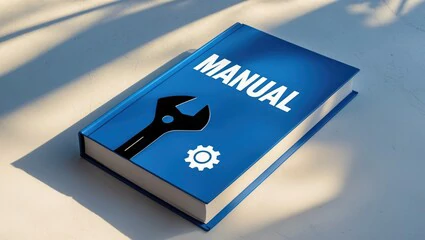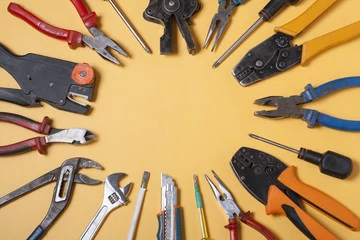Motorcycle Lithium Battery Wiring Sequence
main content
The motorcycle lithium battery wiring sequence is a foundational step to ensure safety, efficiency, and durability. Lithium batteries demand precise terminal connections to prevent hazards like short circuits or overheating. By adhering to the correct sequence and best practices, riders can optimize performance while safeguarding both the battery and their motorcycle’s electrical system.
Essential Preparations Before Wiring
Before handling terminals, complete these critical steps:
1.Terminal Identification: Confirm the positive (+) and negative (-) terminals. Most lithium batteries label these clearly, with red for positive and black for negative.
2.Component Inspection: Examine cables for wear, cracks, or corrosion. Damaged wires increase resistance and fire risks.
3.Power Disconnection: Turn off the motorcycle’s ignition and remove any existing battery to avoid accidental activation.
4.Tool Preparation: Use insulated tools, anti-corrosion grease, and vibration-resistant hardware for secure connections.
Safe Wiring Sequence: Step-by-Step
Step 1: Attach the Positive Terminal
Connect the red (positive) cable to the battery’s positive terminal first. Tighten it firmly, but avoid excessive force to prevent thread damage.
Route the cable away from sharp edges or heat sources like exhaust pipes to minimize wear.
Step 2: Secure the Negative Terminal
Fasten the black (negative) cable to the negative terminal next. This order reduces sparking risks during installation.
Ensure cables have slack to avoid tension, which can loosen connections over time.
Step 3: Install Protective Components
Place anti-vibration pads beneath the battery to absorb shocks from rough terrain.
Apply dielectric grease to terminals for corrosion resistance, particularly in humid climates.
Step 4: Final Verification
Use a multimeter to confirm polarity alignment. Reversed connections can destroy electronics.
Test cable tightness by gently pulling them. Loose terminals lead to power fluctuations.
Avoiding Common Wiring Errors
Polarity Reversal: Always double-check terminal labels. Incorrect connections can permanently damage the battery.
Inadequate Insulation: Cover exposed terminals with insulated caps to prevent accidental contact.
Ignoring Vibration: Secure the battery with brackets to avoid internal damage from constant shaking.
Post-Installation Testing Protocol
1.Voltage Check: A healthy lithium battery should read 12.8V–13.2V. Values below 12.0V indicate charging issues.
2.Function Test: Activate the ignition and test lights, horn, and starter. Weak responses suggest loose wiring.
3.Load Test: Take a short ride to observe performance. Sudden power loss warrants rechecking connections.
Maintenance for Maximum Lifespan
Terminal Cleaning: Remove oxidation every 3 months using a wire brush and baking soda solution.
Storage Practices: Disconnect the negative terminal and store the battery at 50% charge in a cool, dry area.
Smart Charging: Use lithium-compatible chargers to avoid overcharging, which degrades cells.
Conclusion
Mastering the motorcycle lithium battery wiring sequence guarantees safer rides, extended battery life, and consistent power delivery. Prioritize polarity accuracy, vibration protection, and routine checks to harness lithium technology’s advantages—lightweight efficiency, fast charging, and cold-weather reliability. Always reference your battery’s manual for model-specific guidelines and invest in high-quality tools for seamless installation.

START-STOP LITHIUM battery
Enov start-stop battery is designed to provide excellent performance for high-demand start-stop vaehicles. It adopts the third-generation intelligent lithium platform architecture to achieve technological breakthroughs in core indicators such as cycle life, environmental adaptability and energy density. Compared with the traditional lead-acid battery system, the energy efficiency is increased by 210%, the cycle life is extended by 8-10 times, and the monthly self-discharge rate is controlled within 3%. Enov's unique low-temperature battery technology makes a breakthrough in achieving stable output in the whole climate domain from -30℃ to 65℃, maintaining more than 90% of the effective capacity release under extremely cold conditions (-30℃), and maintaining 90% of the capacity in high temperature environments (65℃).
The start-stop battery series products cover the mainstream voltage platform of 12V/24V/48V, and support flexible configuration of LFP (lithium iron phosphate) and NCM (lithium nickel cobalt manganese oxide) dual-material system. All models adopt modular design to support customization of different model specifications. Enuo engineering and technical team to provide full cycle technical service support, if you need, please contact us.
Other products
UAV BATTERY
LITHIUM ENERGY STORAGE BATTERY
QUICK INQUIRY
FAQ
Access to high frequency technical questions with one click, get accurate answers on product application, after-sales policy and customization process.
Service and Support
Get the latest product specifications, explore professional OEM/ODM customization services, click to open exclusive technical support and production solutions.
Become a Partner
We sincerely invite resources to interconnect, work together for win-win development, and immediately open a new chapter of strategic cooperation!



